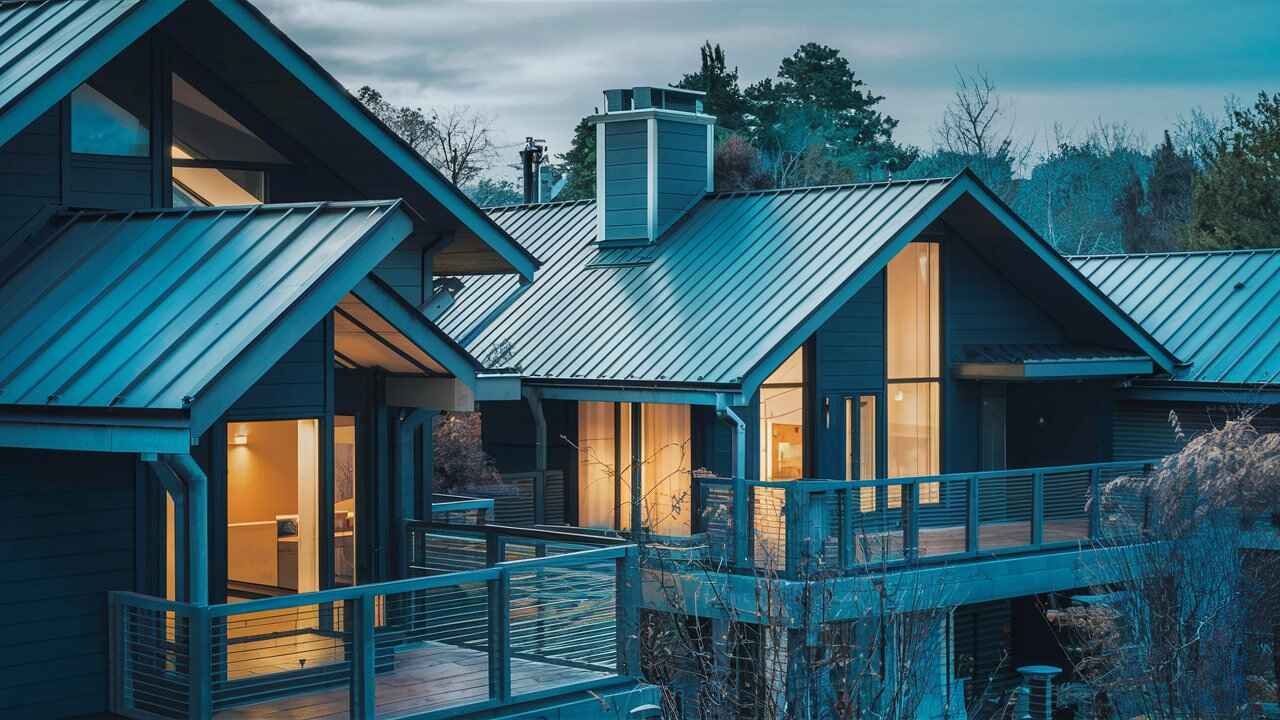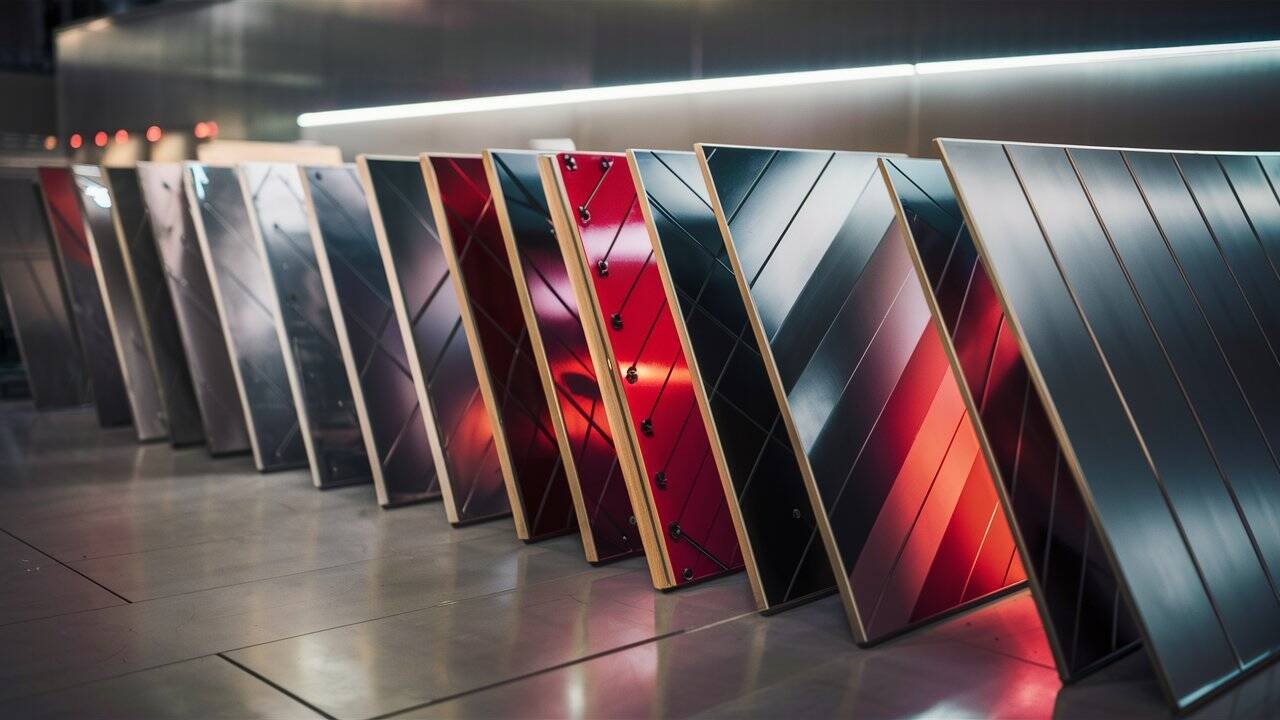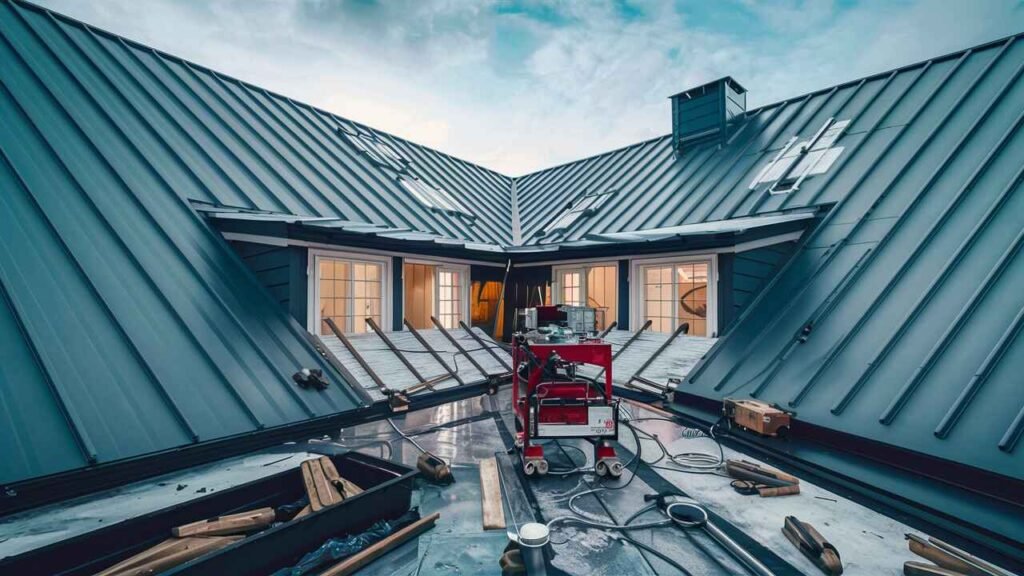Are you considering a new roof for your home in 2024? Metal roofing has become an increasingly popular choice for homeowners looking for durability, energy efficiency, and style. In this comprehensive guide, we’ll explore the benefits of metal roofing, compare different materials, discuss costs, and provide an installation overview. By the end, you’ll have a clear understanding of why metal roofing might be the perfect choice for homes in 2024.
Why Consider a Metal Roof for Your Home in 2024?
So, you’re thinking about choosing a new roof for your pad in 2024? Let me tell ya, it’s time to consider metal. Why? For starters, metal slate and galvanized steel aren’t just any roofing options; they bring a distinctive look that seriously levels up your home’s vibe. Plus, a quality roof made from durable metal can handle what Mother Nature throws at it way better than the usual roofing materials including the look of asphalt.
And let’s talk about keeping your home comfy. Installing metal roofing can be a game-changer for your heating and cooling bills because these roof types are ace at reflecting the sun’s heat. Each panel style and option in the products and services may vary, but they all cover around 100 square feet. Plus, with a fresh new underlayment, your home’s roof’s efficiency is through the roof—pun intended.
Worried about roof replacement costs? Consider this: the initial outlay for installing metal roofing is offset by its longevity and low maintenance. We’re talking about a chic roof that’s one and done for decades. And if you’re wondering about expertise, pros with a decade of experience have got you covered, ensuring your home sports a top-notch roof that’s built to last.
Benefits of Metal Roofing
Metal roofs can last 50-70 years, far outlasting traditional roofing materials like asphalt shingles. They are resistant to fire, high winds, and pests. Metal roofing is also lightweight, reducing stress on your home’s structure.
Comparing Durability: Metal Roof vs. Traditional Asphalt Shingles
Asphalt roofs typically last 12-20 years, while metal roofs can last 40-70 years. Metal roofing doesn’t crack, chip, or corrode and has a high wind and impact resistance rating. Asphalt shingles are prone to damage from high winds, hail, and fire.
Metal Roofs Offer: Energy Efficiency and Environmentally Friendly Options
Metal roofing reflects heat, keep your home cooler, and can reduce cooling costs by 10-25%. Metal roofs are made from 25-95% recycled content and are 100% recyclable at the end of their life.
Understanding the Different Types of Metal Roofing Materials
Standing Seam Metal Roof: The Modern Homeowner’s Choice
Standing seam panels are the most popular type of residential metal roofing. They feature raised seams that run vertically from the ridge to the eave, providing a sleek, modern look. Standing seam systems use hidden fasteners, making them virtually watertight and low-maintenance.
Steel Roofing vs. Aluminum Roofing: What’s Best for Your Home?
Steel is the most common metal roofing material, offering strength and affordability. Aluminum is lightweight, corrosion-resistant, and ideal for coastal areas, but more expensive than steel. Both steel and aluminum come in a variety of colors and finishes to suit any home style.
The Aesthetic Appeal of Copper Roofing and Zinc’s Unique Patina
Copper and zinc are premium metal roofing materials known for their distinctive appearance. Copper develops a beautiful green patina over time, while zinc has a self-healing, bluish-gray patina. These materials are more expensive but offer unmatched durability and curb appeal.
How Much Does Metal Roofing Cost in 2024?

Breaking Down Metal Roof Costs: Per Square Foot Pricing
Metal roofing prices range from $7 to $18 per square foot, depending on the material, style, and finish. Steel panels are typically less expensive than aluminum, copper, or zinc. Standing seam systems cost more than exposed fastener or corrugated metal panels.
Factors Influencing the Total Cost: From Materials to Installation
The total cost of metal roofing depends on the roof size, complexity, and installation costs. Materials and labor make up the bulk of the cost, with an average 2,000 sq. ft. roof costing $20,000-$34,000. Geographic location, contractor experience, and time of year also impact the overall cost.
Extra Costs to Consider: Fasteners, Coatings, and Installation Complexity
Additional costs may include fasteners, underlayment, flashing, and specialty coatings. Complex roof designs or customization options can also increase the total cost. Removing an old roof, roof repairs, or structural reinforcement may add to the overall cost.
Key Factors to Choosing the Best Metal Roof Material for Your Home
Evaluating Roof Material Types: What Homeowners Need to Know
When choosing a metal roofing material, consider factors like cost, strength, weight, sustainability, and maintenance. Residential metal roofing is available in steel, aluminum, copper, and zinc, each with unique pros and cons. Consult with a metal roofing expert to determine the best material for your home’s specific needs.
Corrosion Resistance and Coating Options for Longevity
Corrosion resistance is crucial for metal roofing longevity, especially in coastal or humid areas. Aluminum and zinc offer superior corrosion resistance compared to steel. Protective coatings like Kynar 500 or Hylar 5000 can enhance the durability and color retention of metal roofing.
Weight and Installation Requirements of Different Metal Panels

The weight of metal roofing varies by material, with aluminum being the lightest and steel the heaviest. Lighter materials are easier to handle and install but may be more prone to denting. Some metal roofing systems require specialized installation techniques or tools, so choose a contractor with experience.
Installation Guide: What to Expect When Installing a Metal Roof
Choosing the Right Roofing Contractor for a Metal Roof Installation
Look for a contractor with a proven track record of successful metal roofing installations. Verify their licensing, insurance, and certifications, and ask for references and examples of their work. Get detailed quotes from multiple contractors and ask about their installation process and warranty.
DIY Metal Roof Installation vs. Professional Installation: Pros and Cons
While DIY metal roofing installation can save money, it requires specialized skills and tools. Improper installation can void warranties and lead to leaks or other issues. Professional installation ensures a high-quality, long-lasting roof and preserves the manufacturer’s warranty.
Navigating Metal Roofing Systems: Panels, Shingles, and Fasteners
Metal roofing comes in various styles, including vertical panels, metal shingles, and metal tiles. Each style has its own installation requirements, such as fastening methods and underlayment. Work with your contractor to choose the best metal roofing system for your home’s architecture and climate.
Exploring the Latest Metal Roof Styles and Colors for 2024
The Evolution of Metal Roof Styles: From Traditional to Modern
Metal roofing has come a long way from the basic corrugated sheets or tin roof of the past. Today’s metal roofing mimics the look of traditional materials like wood shake, tile, or slate. Modern metal roofing styles feature clean lines, minimalist designs, and bold geometric patterns.
Choosing a Color Scheme: Metal Roofing Panels and Coatings
Metal roofing comes in a wide array of colors, from classic earth tones to vibrant hues. Color options can be achieved through paint finishes or granular coatings. Stone-coated steel offers the texture and depth of traditional roofing materials with the benefits of metal.
How New Roofing Technology and Trends Influence Metal Roof Design
Advances in metal roofing technology have led to new panel shapes, textures, and coatings. Trends like energy efficiency, sustainability, and smart home integration are shaping the future of metal roofing. As metal roofing continues to evolve, homeowners can expect even more customization options and innovative designs.
FAQs
Is it cheaper to put a metal roof or shingles?
While metal roofing has a higher upfront cost than asphalt shingles, it can be more cost-effective in the long run due to its longevity and energy efficiency.
What is the disadvantage of a metal roof?
The main disadvantages of metal roofing are the higher initial cost and the potential for noise during heavy rain or hail.
What are the 2 types of metal roofs?
The two main types of metal roofs are standing seam and exposed fastener. Standing seam systems have hidden fasteners and a sleek, modern look, while exposed fastener systems have visible screws and a more traditional appearance.
What do you put under a metal roof?
A high-quality underlayment is essential for any metal roofing installation. Synthetic underlayment or felt paper provides an additional layer of protection against moisture and helps prevent leaks.
In conclusion, metal roofing is a smart, sustainable, and stylish roofing choice for many homeowners in 2024. With its unmatched durability, energy efficiency, and versatility, metal roofing offers a superior alternative to traditional roofing materials. As you embark on your home improvement journey, consider the benefits of quality metal roofing and consult with a trusted MRA contractor to unlock the potential of metal roofing for your home.


